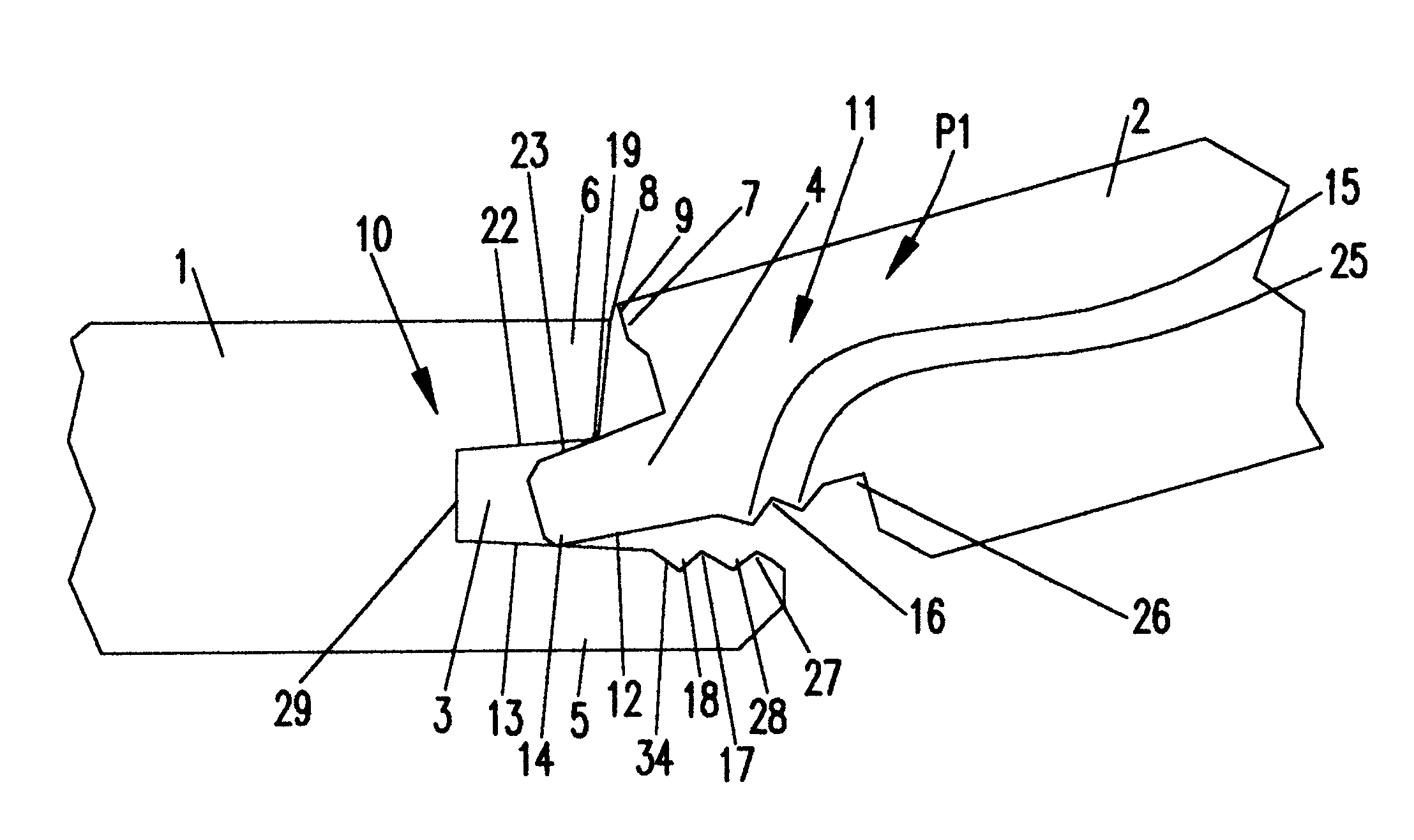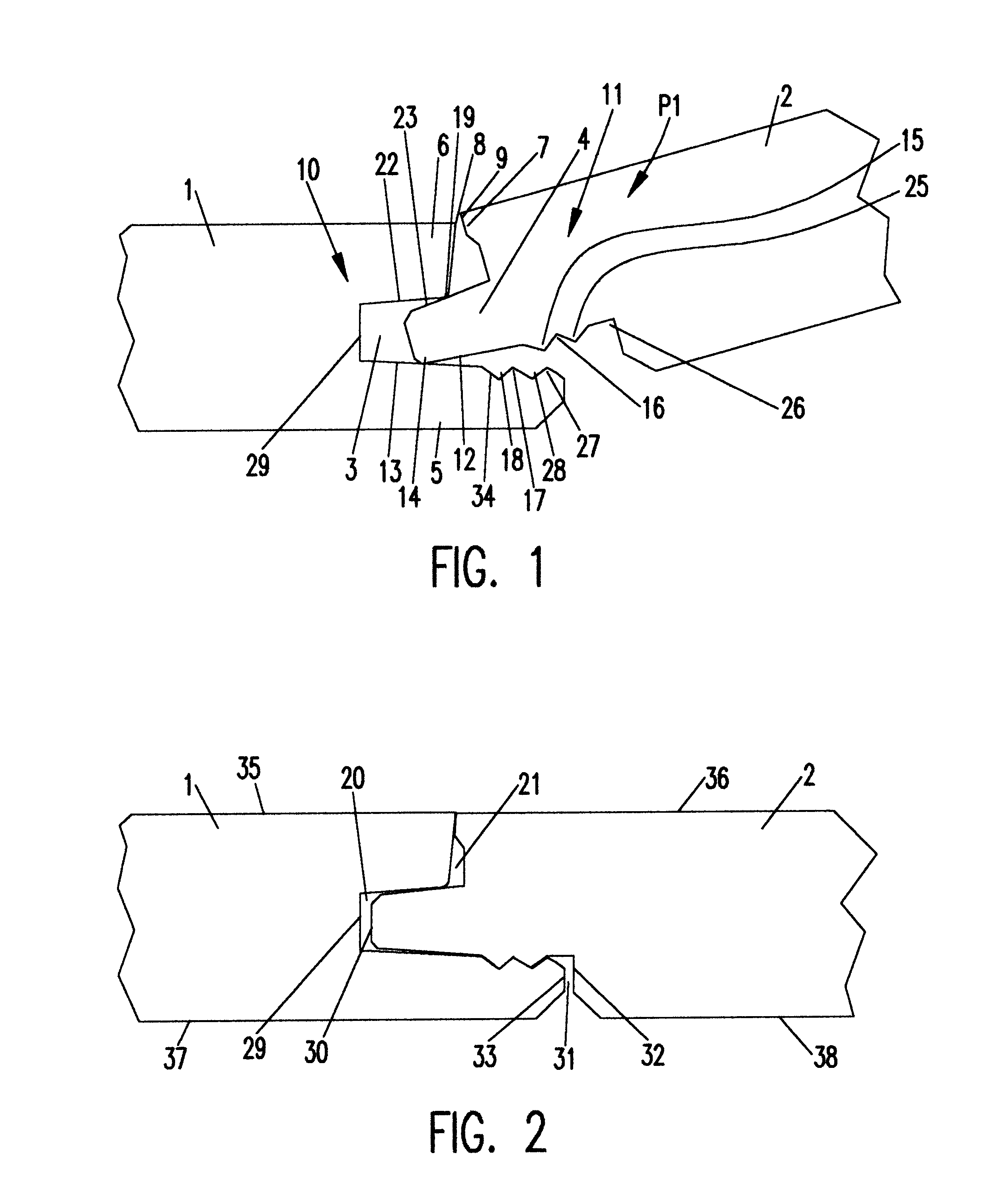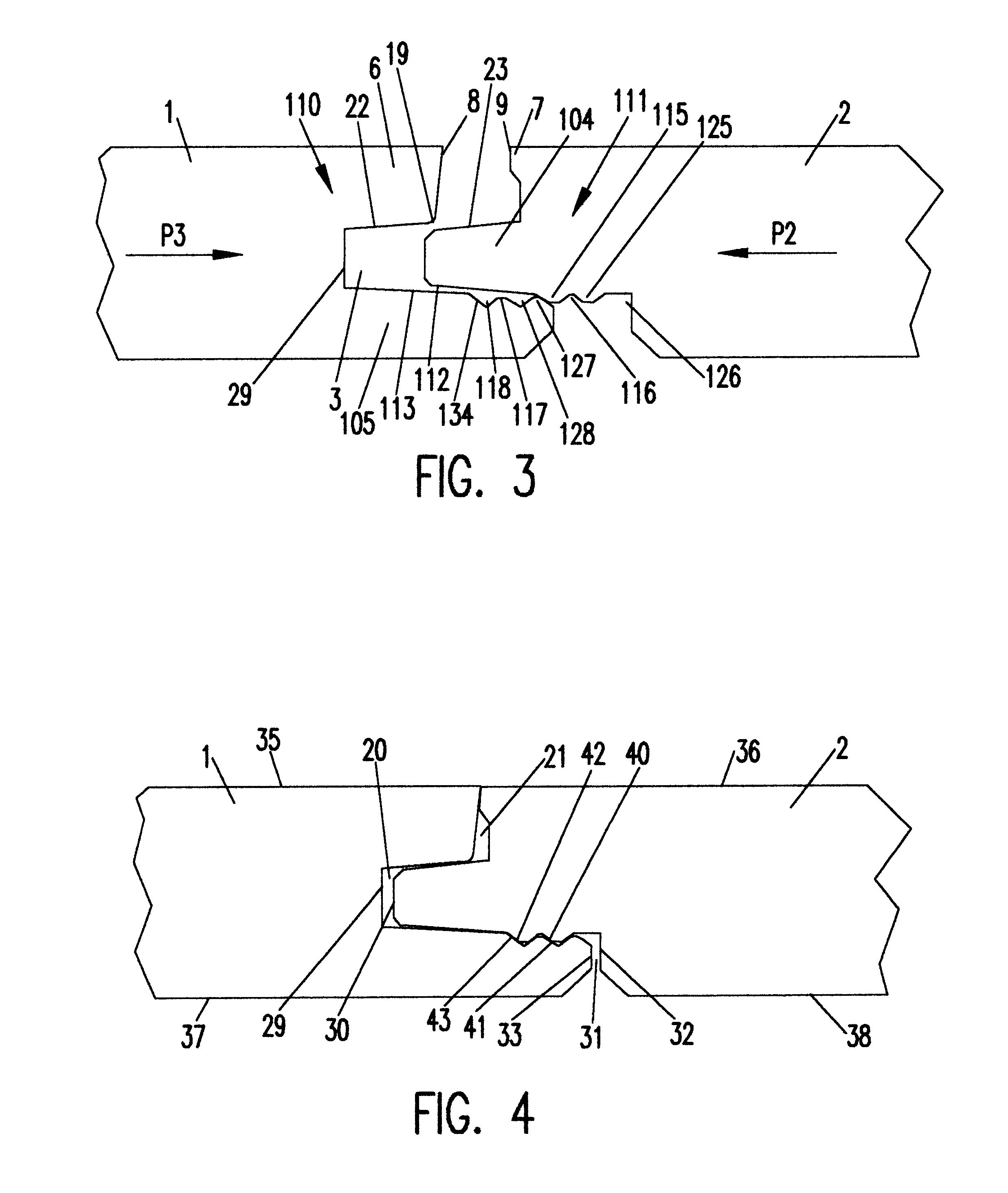Flooring panel
- Summary
- Abstract
- Description
- Claims
- Application Information
AI Technical Summary
Benefits of technology
Problems solved by technology
Method used
Image
Examples
Embodiment Construction
Referring now to the drawings, and more particularly referring to FIG. 1, there is shown a connection panel 1 which includes a first connection member 10 and on the opposite side a second connection member 11. Both connection members 10 and 11 are shaped so that they are appropriate for face-to-face engagement with each other, as is shown in FIGS. 1 and 2.
The first connection member 10 of flooring panel 1 has an upper projection 6, a lower projection 5, as well as a groove 3 between the projections 5 and 6. An installation ledge 8 is formed on the upper end of the upper projection 6. The groove 3 shows a groove-base 29 limited by the upper side 13 of the lower projection 5 and the lower side 22 of the upper projection 6, whereby the lower side 22 of the upper projection 6 and the upper side 13 of the lower projection 5 are slanted towards the groove-base 29. This configuration results in the groove 3 being tapered toward the groove-base 29.
At the outer end of the lower projection 5 ...
PUM
| Property | Measurement | Unit |
|---|---|---|
| Height | aaaaa | aaaaa |
| Deformation enthalpy | aaaaa | aaaaa |
Abstract
Description
Claims
Application Information
 Login to View More
Login to View More - R&D
- Intellectual Property
- Life Sciences
- Materials
- Tech Scout
- Unparalleled Data Quality
- Higher Quality Content
- 60% Fewer Hallucinations
Browse by: Latest US Patents, China's latest patents, Technical Efficacy Thesaurus, Application Domain, Technology Topic, Popular Technical Reports.
© 2025 PatSnap. All rights reserved.Legal|Privacy policy|Modern Slavery Act Transparency Statement|Sitemap|About US| Contact US: help@patsnap.com



